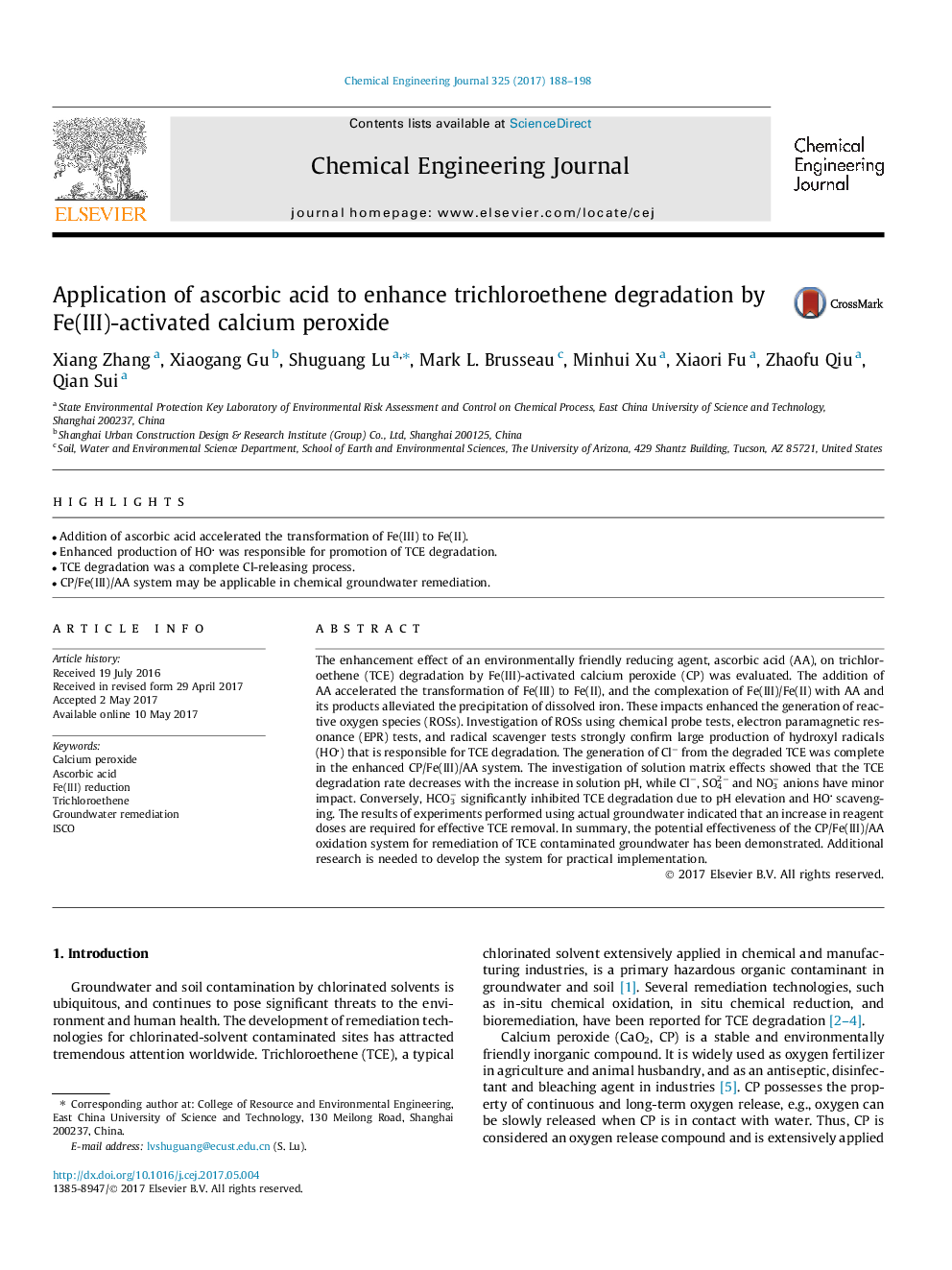| Article ID | Journal | Published Year | Pages | File Type |
|---|---|---|---|---|
| 6466083 | Chemical Engineering Journal | 2017 | 11 Pages |
â¢Addition of ascorbic acid accelerated the transformation of Fe(III) to Fe(II).â¢Enhanced production of HO was responsible for promotion of TCE degradation.â¢TCE degradation was a complete Cl-releasing process.â¢CP/Fe(III)/AA system may be applicable in chemical groundwater remediation.
The enhancement effect of an environmentally friendly reducing agent, ascorbic acid (AA), on trichloroethene (TCE) degradation by Fe(III)-activated calcium peroxide (CP) was evaluated. The addition of AA accelerated the transformation of Fe(III) to Fe(II), and the complexation of Fe(III)/Fe(II) with AA and its products alleviated the precipitation of dissolved iron. These impacts enhanced the generation of reactive oxygen species (ROSs). Investigation of ROSs using chemical probe tests, electron paramagnetic resonance (EPR) tests, and radical scavenger tests strongly confirm large production of hydroxyl radicals (HO) that is responsible for TCE degradation. The generation of Clâ from the degraded TCE was complete in the enhanced CP/Fe(III)/AA system. The investigation of solution matrix effects showed that the TCE degradation rate decreases with the increase in solution pH, while Clâ, SO42â and NO3â anions have minor impact. Conversely, HCO3â significantly inhibited TCE degradation due to pH elevation and HO scavenging. The results of experiments performed using actual groundwater indicated that an increase in reagent doses are required for effective TCE removal. In summary, the potential effectiveness of the CP/Fe(III)/AA oxidation system for remediation of TCE contaminated groundwater has been demonstrated. Additional research is needed to develop the system for practical implementation.
